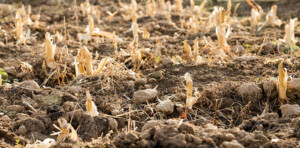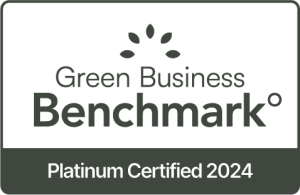“Sustainability is a way of thinking: At Huma® we’ve been thinking sustainably for over 50 years.”
We make that statement at the top of the Sustainability section of our Huma Website. And we stand by it. But what, exactly, does it mean?
“Sustainable” has become a very popular term over the past 10 years, a buzzword that is sometimes overused and occasionally misused by companies that are trying to improve their brand image without actually committing to the principles it infers.
Most people immediately think of the environmental aspect of sustainability: managing Earth’s natural resources in ways that do not diminish or degrade the planet’s ability to provide them in the future.
The term has evolved, though, to also include the social and economic effects of human actions. The 1987 United Nations (U.N.) report, Report of the World Commission on Environment and Development: Our Common Future, provided a more comprehensive definition: “development that meets the needs of the present without compromising the ability of future generations to meet their own needs.”
Based on that concept, the U.N. has since published 17 sustainable development goals (SDGs) for nations to use to measure their own sustainability development. These goals recognize that actions in one area will affect outcomes in others, that development must balance economic growth, environmental care, and social well-being.
In business, this has translated to organizational sustainability in environment, social, and governance (ESG) processes. The struggle for business has been how to document real ESG sustainability in ways that stand up to outside scrutiny. Anyone can claim to be sustainable, but how should sustainability be measured and verified so that consumers can trust the claim?
Over the past 50 years, we at Huma have always striven to create products that work with nature in support of the well-being of our planet and our customers and to create a working environment that supports the well-being of our staff members and their families. We were doing this long before sustainability became the “thing” that it is now. We never publicly promoted that this was our approach: we did it because we felt it was the right thing to do. What has always been most important to us is family, and leaving the world a better place for future generations is hardwired into everything we do.
Now, though, customers want to know: Is Huma® a sustainable company? Yes? Prove it!
When we designed the Huma logo, we put our sustainability promise right into the design: the three colored dots in the “U” stand for our commitment to People (red), Planet (green), and Proficiency (blue: the sustainable science and technology we put into our humic-based products).

Our second step was to enroll in the Green Business Benchmark (GBB) sustainability public reporting program. GBB offers a framework that includes over 150 items that companies can accomplish to become more sustainable, and they offer a platform where anyone can go to see how well a company is doing on its road to sustainability.
When we started going through those 150+ GBB sustainability practices with our executive team, a common refrain was “We’re already doing that!” Four-day work weeks? Ten weeks family leave? Internal recycling program? Multiple quality checks on our products? Check, check, check, check, and on and on. We jumped up to the Gold level based on already established practices. We’re hard at work now trying to achieve the Platinum level in the next couple of months.
You’ll see a Green Business Bureau logo at the bottom of our Website home page. If you click on that, (or just click here) you’ll jump right over to our GBB profile and be able to see what kinds of things we’ve accomplished on our road to sustainability.
What’s next?
We’re currently going through an audit by the Town of Gilbert, where our main office is located, to become part of their Green Gilbert Partnership Program. Our goal is to be certified by the end of 2023.
We’re also in the process of redesigning our in-house lab and field research projects to place a greater emphasis on proving and improving the sustainable nature of our agricultural fertilizers/biostimulants and wastewater bioremediation products.
Other Sustainability goals that are in progress:
-
- 2023: Baseline measurement (water, power, recycling), sustainability research (more sustainable products for agriculture and wastewater bioremediation), identification of key indicators/metrics, and identifying initial sustainability strategies and reporting mechanisms.
-
- 2024: Measuring our complete Carbon and Greenhouse Gas Emissions (GHG) footprint, implementing strategies to reduce those factors, and establishing goals for becoming carbon neutral and reducing GHG emissions.
-
- 2025: Extending sustainability goals and practices to our value chain, and reviewing and revising our comprehensive sustainability goals and practices.
As we go through this process, we’ll also take a look at independent sustainability auditing such as B Corp Certification by B Labs. It’s important to us that we provide our customers with vetted information to validate our sustainability claim.
The great Dr. Seuss, in his book The Lorax, said, “Unless someone like you cares a whole awful lot, nothing is going to get better. It’s not.” We care a whole awful lot: We hope you do, too.
Join us on the Road to Sustainability.
Related Posts

Earth Day: “It’s Getting Better All the Time”
Celebrating Earth Day every April 22 is a great time to pause and reflect: How are we, today, treating the environment and the plants, animals, and people who live in it? What have we accomplished in the past year that makes our planet a better, more sustainable place to live and raise our families? What are our goals for future improvement?

Fall Is Fertil Humus® Time
Our Fertil Humus® product, when applied in the fall, can help degrade any crop residue or crop field trash that’s left behind and convert it to humus over the winter.


